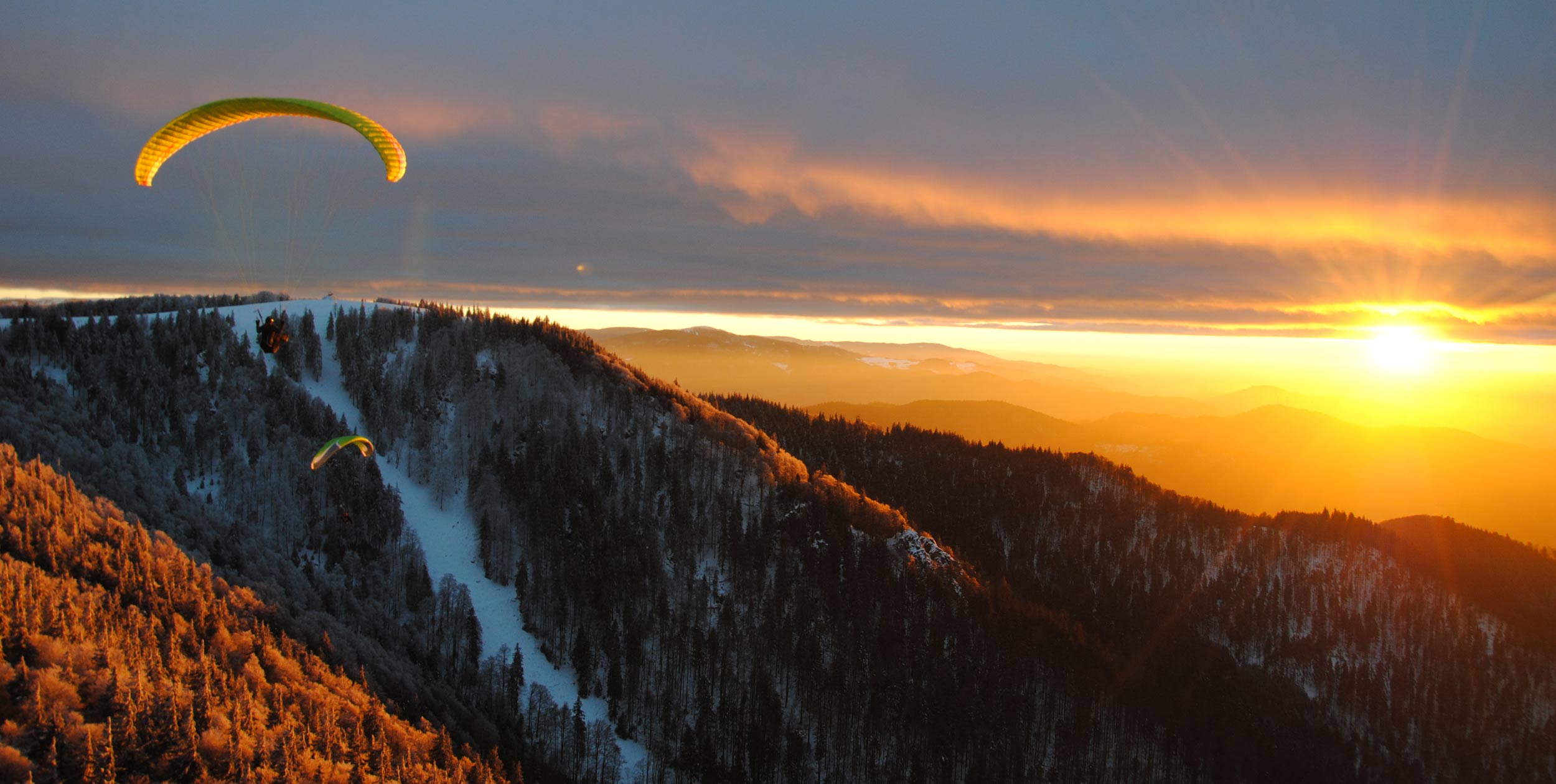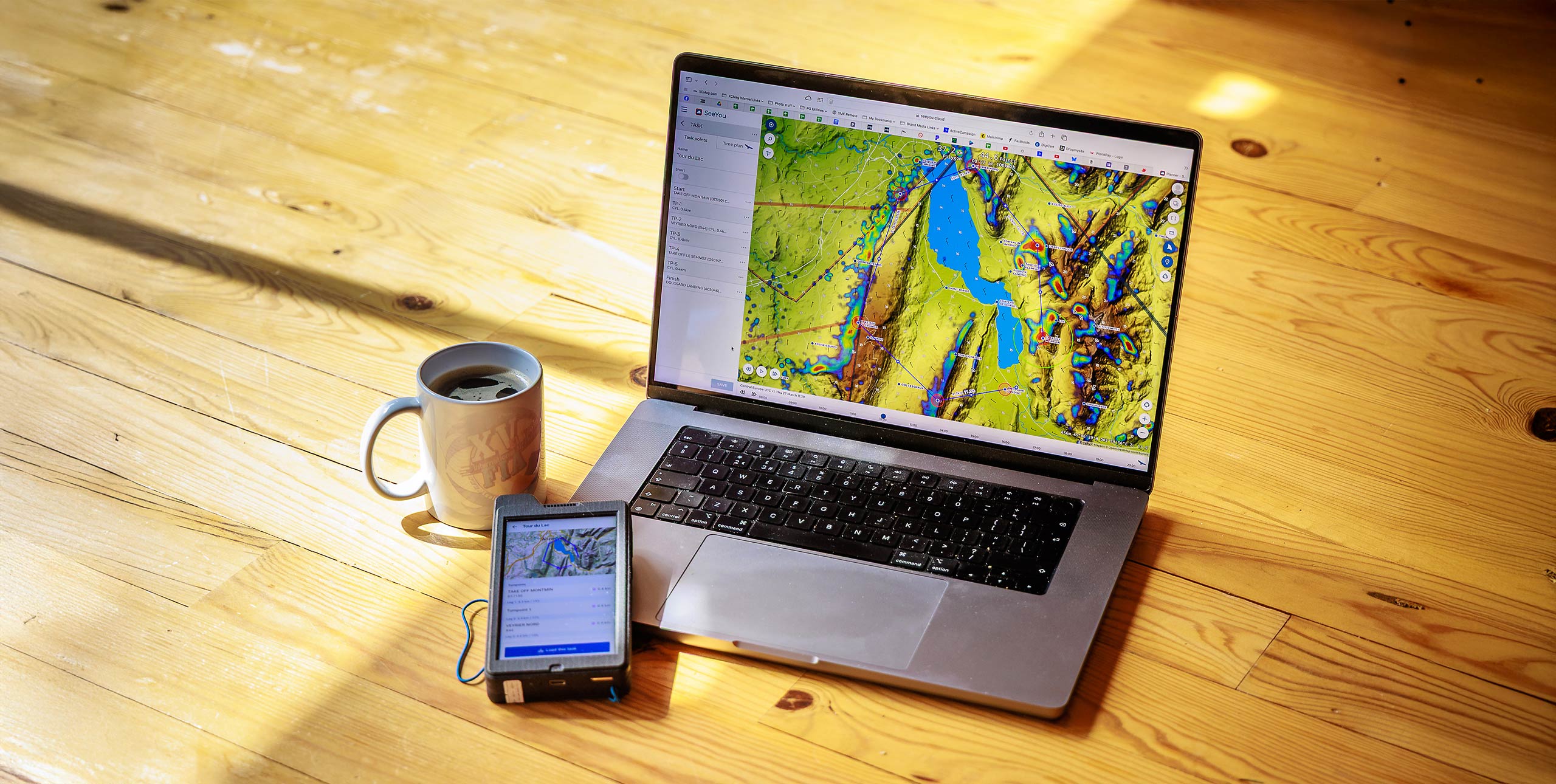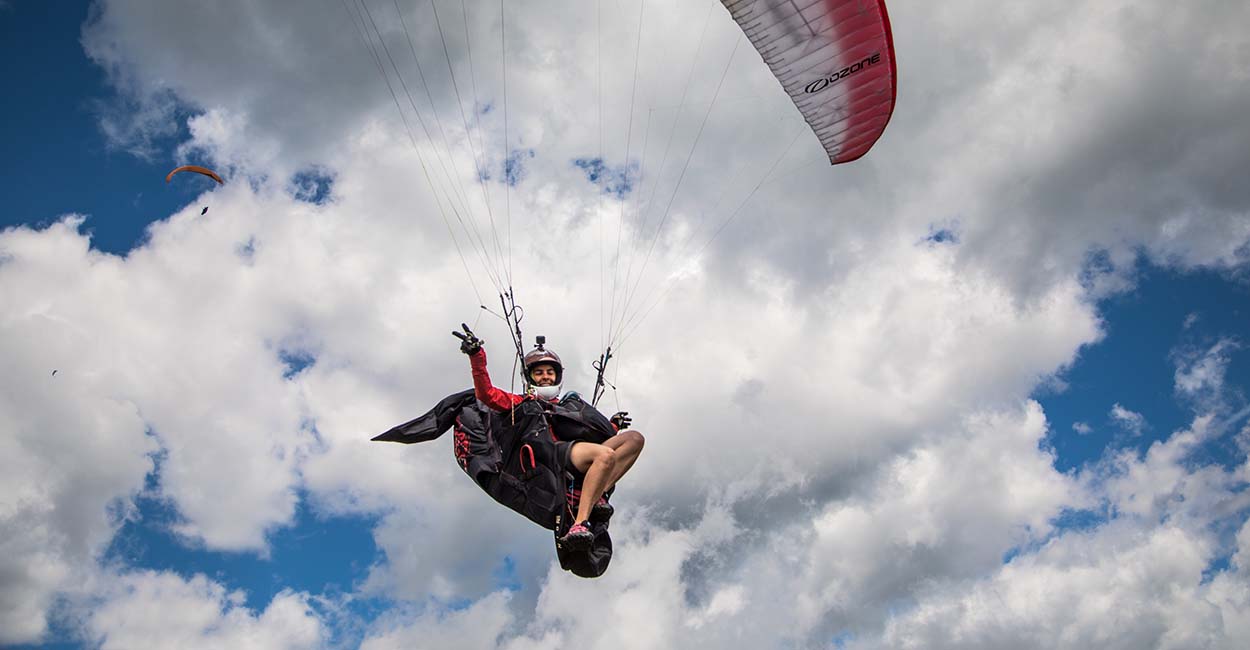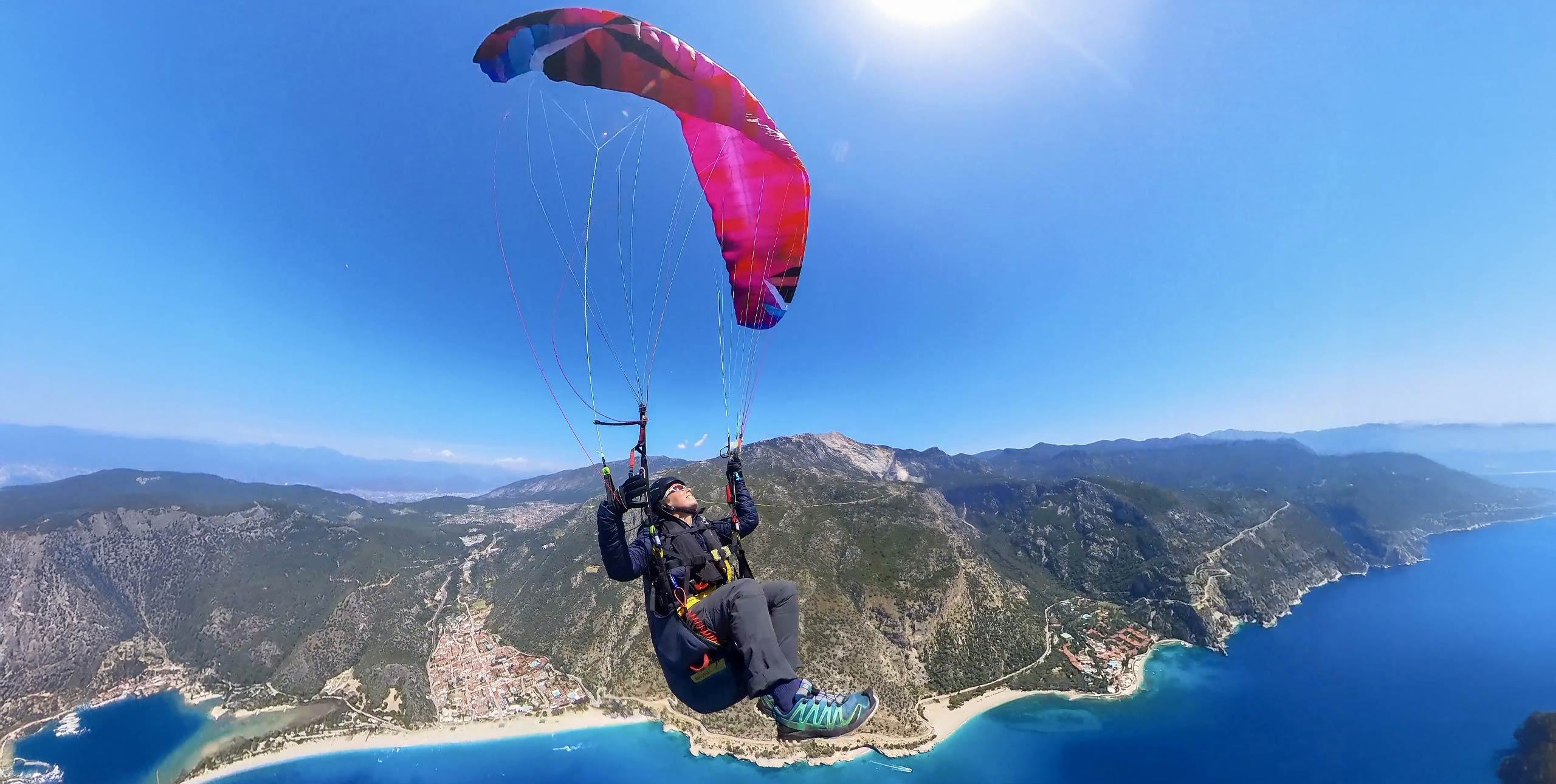
Greg Hamerton has some advice for paraglider pilots on how to keep learning during the winter season
Practise active flying
Active flying is the art of reacting to the wing’s movements with corrections that calm it down. The foundation of this skill is pitch control, and there’s no better time than winter to practice messing around with your wing. The cold air is dense and often stable due to limited surface heating. So the reactions of your wing become very predictable. Do a series of pitches: on the brakes to swing up, off the brakes to dive until you have a decent pendulum built up. Then keep your hands up while you climb (as you normally should) and dampen out the dive as the wing surges forward (as you normally should). Watch the horizon at first, then watch the wing, then watch the ground – each position will teach you something more about feeling the moment for active flying input. Practise, it will become automatic.
Develop muscle memory
Practising ground handling is vital. There’s more to ground handling than just learning better launch control. All the time you’re connected to your wing your body is learning the subtle adjustments needed to control the wing, and strengthening the necessary muscles. This improves your reaction time. The quicker you react, the less you have to do. So get the wing up and keep it there! Once you’ve run after your wing for ten minutes you’ll be warm as toast.
Investigate the venturi
We all know there are places where the wind accelerates due to the venturi effect. But identifying exactly where it begins can be difficult – until you have felt it. Because winter flying is mostly during sunny gaps (high pressure), the air is dense. The air is cold so it’s even denser. This makes the venturi effect easier to identify as the change in speeds is more dramatic. Soar close to the hill. Watch how your groundspeed changes as you soar to different positions: behind launch, on the point, in the lift band, and out front. This helps build up a mental picture: good for summer.
Practise slow flying
Improve your landing approaches by exploring the stall point of your wing a few metres above the ground. Find a gently sloping field or suitable launch site. Don’t watch the wing while you’re doing this, you’ll end up crashing on your backside. Keep your legs down for landing, and develop a feeling for the approach to stall. Being able to recognise the feeling of the wing ‘mushing’ into a stall is invaluable – there’s a moment when you can release the brakes and still keep it flying, and a moment beyond that when the stall will bite.
Master slope landing
If you only launch when the conditions are good enough to stay up, then it’s likely you have limited slope-landing experience, which in turn limits your confidence at launching early (in case you drop out). The pilots who get good very quickly are the ones who launch first, try out the air, and aren’t afraid of a quick slope landing and walk back up to launch. To be fair, some sites are not suited to slope landing, but maybe there’s a place within range you could visit?
Study!
Knowledge is useful, but studying is not just about amassing theory that could help you fly further and more safely. It also induces the feeling that you are progressing as a pilot, a feeling which keeps the dream alive. Read some books and watch some DVDs.
Plan a Big Adventure
Research a destination yourself or use a guiding company. Just knowing you’ve got a trip planned and that you need to be ready will give you motivation to get some practice in, despite the dour expression on the weatherman’s face.
Turn tighter
The number one reason for low-airtime pilots not getting away from the hill in thermals is not turning tight enough. That’s because it’s intimidating when you’re not sure how fast you can actually turn. In nice smooth steady winter flying conditions, if you have some altitude, time how long it takes you to complete a full 360. See how fast you can achieve the 360 without turning too tight (when the wing begins to drop into a spiral turn or feels ‘mushy’ on the inside wingtip, release the brakes at once!) The trick is to get your weight-shift in before the turn, and to control the turn rate for a smooth 360.
Swap wings
No one wants to swap wings in summer because they might go XC. But in winter swap wings with your mates just for fun. Even if it flies worse than a frozen chicken, the chance to fly it is invaluable. You’ll return to your wing with an appreciation of what your wing does well, and a broader experience of wing handling.
If you are in winter now, make the most of it! There’s lots to do.
This article was published in Cross Country magazine issue 151











